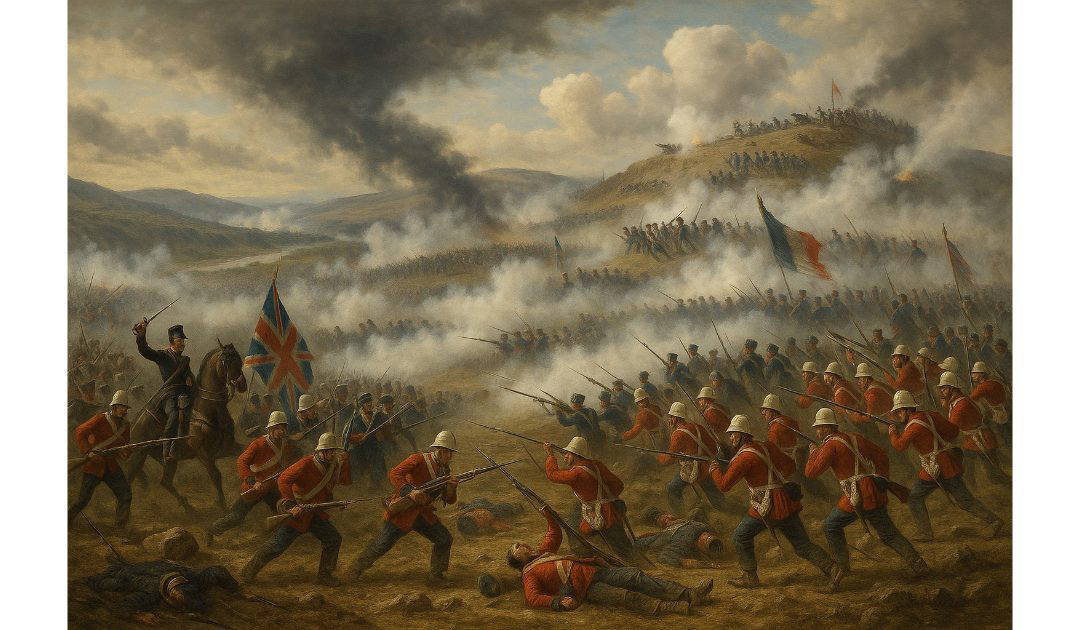On the 20th of September, 1854, British and French forces defeated the Russians at the Battle of Alma. This was a pivotal engagement during the Crimean War, which saw an alliance of British, French, and Ottoman Empire forces pitted against the Russian Empire. This battle marked the first significant conflict of the war and set the tone for the subsequent military campaigns on the Crimean Peninsula.
Background and Context
The Crimean War (1853-1856) was primarily instigated by disputes over the rights of Christian minorities in the Holy Land, then part of the Ottoman Empire. However, the underlying causes were rooted in the balance of power in Europe, with Russia seeking to expand its influence at the expense of the weakening Ottoman Empire. The British and French, determined to curb Russian expansion and protect their interests in the Mediterranean, formed an alliance with the Ottomans.
In early September 1854, an Anglo-French expeditionary force, accompanied by Ottoman troops, landed at Eupatoria in Crimea with the objective of capturing the strategic naval base of Sevastopol. From there, the allied army began its southward march along the Crimean coast, confronting the Russian forces entrenched along the heights above the River Alma.
The Battlefield and Forces Involved
The River Alma, flowing westward into the Black Sea, provided a natural defensive line for the Russian army, commanded by Prince Alexander Menshikov. The Russian forces occupied strong positions on elevated ground, with well-fortified artillery placements and infantry units spread across the ridges.
The allied army, composed of around 63,000 troops—approximately 26,000 British under Lord Raglan, 30,000 French under Marshal Saint-Arnaud, and 4,000 Ottoman soldiers—faced the daunting task of crossing the river and assaulting the heavily fortified Russian positions.
The Battle Unfolds
The battle commenced late in the morning, with the French executing a flanking manoeuvre along the coastline. The French troops managed to cross the river relatively unopposed, scaling the cliffs with great determination under the cover of naval gunfire from French warships. Meanwhile, the British prepared for a direct assault across the river’s wider and more challenging central section.
The British advance was spearheaded by the Light Division under Sir George Brown and supported by the 1st Division led by the Duke of Cambridge. Despite facing intense artillery and musket fire, the British troops exhibited remarkable discipline and resilience as they crossed the river and ascended the steep heights. The famous Guards Brigade, part of the 1st Division, played a crucial role in breaking through the Russian centre.
However, the battle was far from straightforward. Communication difficulties, rugged terrain, and the heat of battle led to confusion and sporadic coordination among the allied forces. Nevertheless, their superior discipline and determination gradually overwhelmed the Russian defenders. By mid-afternoon, the Russians began to retreat in disarray towards Sevastopol.
Aftermath and Significance
The Battle of Alma was a significant victory for the allies, demonstrating their capability to defeat Russian forces in a set-piece battle. The Russians suffered heavy casualties, estimated at around 5,000-6,000 men, while the allies incurred approximately 3,300 casualties, with the British suffering around 2,000 of those.
Despite the triumph, the battle exposed weaknesses in command and coordination among the allies, issues that would persist throughout the Crimean campaign. The failure to pursue the retreating Russians immediately after the battle allowed Menshikov’s forces to regroup and fortify Sevastopol, leading to the prolonged and gruelling Siege of Sevastopol.
The Battle of Alma also had far-reaching implications on military tactics and the perception of warfare. It highlighted the deadly effectiveness of modern rifled muskets, the importance of coordinated artillery support, and the challenges posed by traditional linear tactics in the face of evolving battlefield technologies.
Legacy
In Britain and France, the victory at Alma was celebrated with great enthusiasm, boosting public morale. The battle’s name was commemorated through numerous street names, public houses, and even ships, reflecting its prominence in the national consciousness.
The courage and resilience displayed by the allied soldiers at the Alma set a precedent for their conduct throughout the Crimean War. However, the battle also served as an early indicator of the logistical, medical, and leadership challenges that would plague the campaign, leading to widespread criticism and eventual reforms in military organisation and healthcare.

